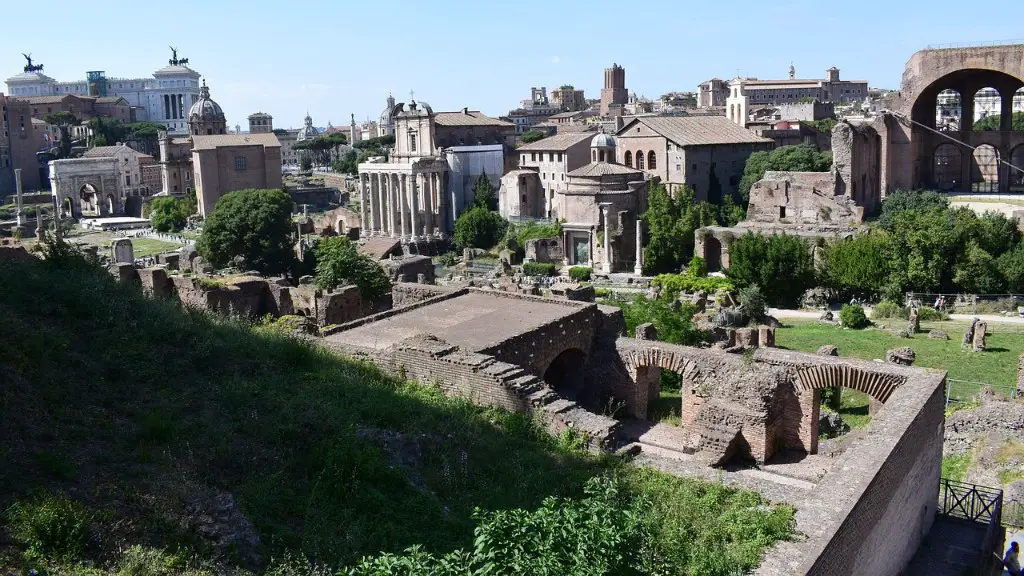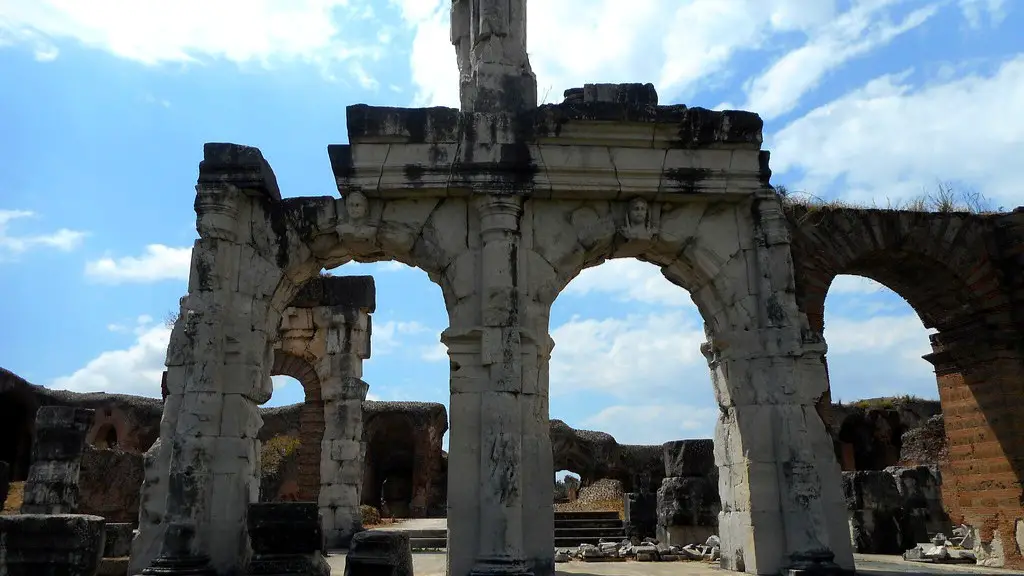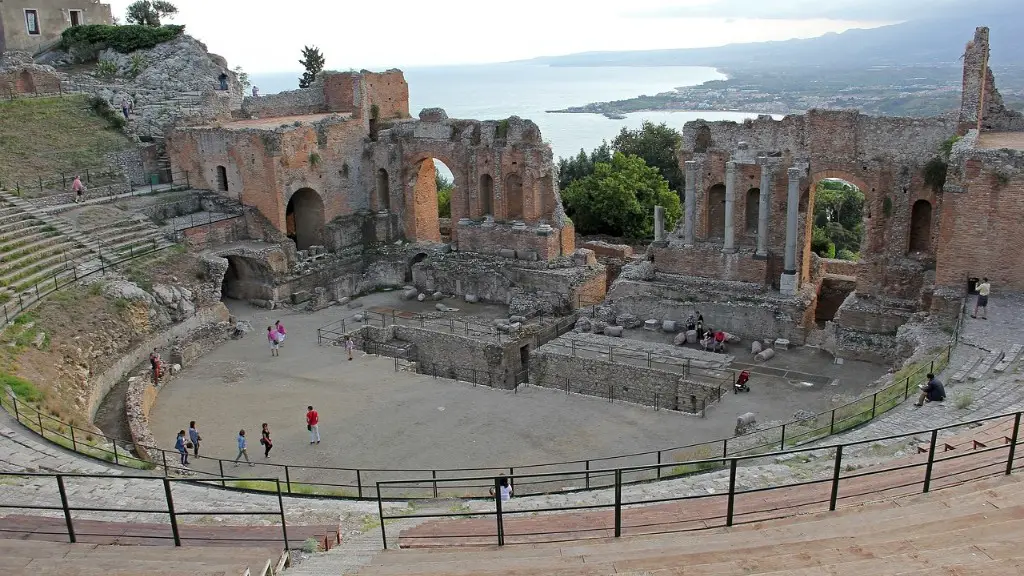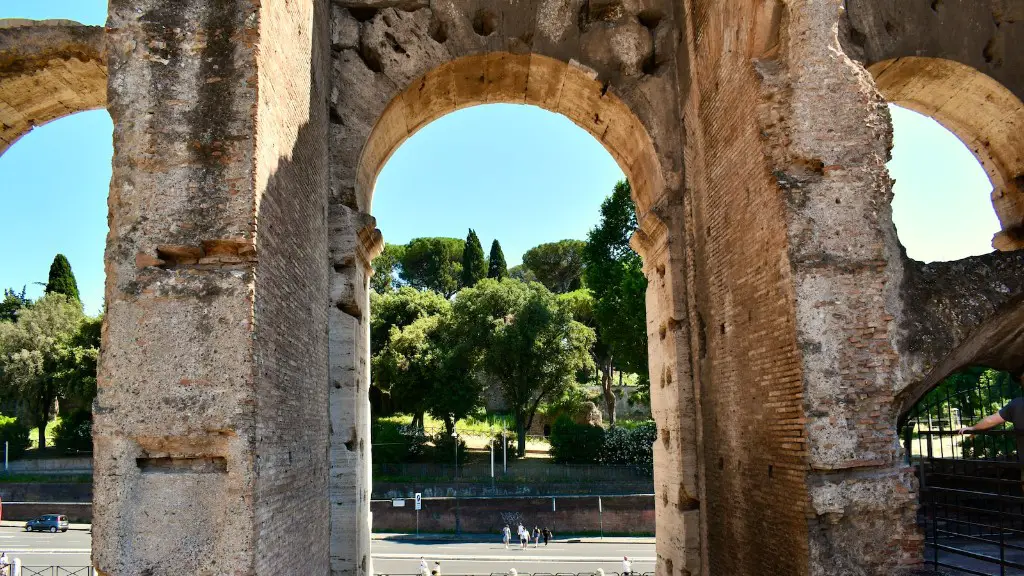Theaters in Ancient Rome
When discussing entertainment in Ancient Rome, one of the first things that comes to mind is the majestic Roman theater. Theaters were the hub of entertainment for the citizens of Ancient Rome, where they convened to watch plays, comedies, and dramas, and witness mock gladiator fights and animal shows. One of the most impressive theaters in the city of Rome was the Theatre of Pompey, which was built in 55BC. It was the first permanent theater in Rome ever built, stretching an incredible 10,000 seats across the paved galleries and stands.
According to historic records, the theatre was a focal point of social gathering in Ancient Rome. It was large enough to accommodate the whole of Rome’s population at the time, and was regularly packed with people. Ancient Roman citizens would congregate at the theatre to witness the latest plays and shows put on by the various writers and actors – performances so popular, in fact, that the citizens would often cause riots claiming that the show was worth their money, or that their tickets had been overcharged.
The Theatre of Pompey was an architectural marvel of the age – one of the reasons it was so beloved was because of its shape, often likened to an amphitheatre. It featured an expansive, curved structure built with three tiers of arcades, with the top tier being reserved for the more privileged citizens of Rome. Each tiered row was supported by 24 columns of travertine, with the front rows being supported by marble. In the centre of the theatre, a large semicircle enclosed the stage and orchestra.
The shows put on at the theatre were incredibly varied – some of the most popular included dramatic enactments of ancient Greek myths and shadow puppetry, and the theatre was also a popular venue for political meetings and debates. Many of the plays and shows were written by Roman playwrights and actors, such as Marcus Titinius and Titus Maccius Plautus – some of the most famous playwrights of the era.
Apart from the theatre, another important venue in Ancient Rome was the Colosseum. Built during the Flavian dynasty, it was initially used as a gladiatorial arena, although it also hosted plays and animal shows. Despite its current demise, the Colosseum remains one of the most iconic structures of Ancient Rome, and stands as a reminder of the grandeur of the Roman Empire.
Games in Ancient Rome
Asides from the theatre and colosseum, the citizens of Ancient Rome also enjoyed playing various games, such as dice, board games, and chariot races. The most widely played game was dice, where two players competed against each other in a race to get the highest score. Although the game had strict rules, some variation existed as to how it was played. Dice were cast into the air by the players, and whoever won the longest race would be the winner. These games were particularly popular with the poorer classes, who would save up their money to make the most out of their gaming experience.
Another popular game in Ancient Rome was board games such as Latrunculi and Ludus Latrunculorum. These were played on a chequered board and used chequered pieces. The aim of the game was to capture as many pieces as possible and eventually get them to the other side of the board. It was believed to have been inspired by the battles found in Ancient Roman literature, such as the epics of Virgil. The game was often accompanied by the song “Tonitrum Latrun” and was often played during intermission of other theatrical shows.
Chariot racing was also popular among the Roman citizens and was often staged on special occasions, such as triumphal parades or religious holidays. It usually comprised four chariots, with four riders competing against each other. The chariots were pulled by two horses and were adorned with colourful symbols and decorations. The races were held in various venues, such as the Circus Maximus in Rome and the Hippodrome in Constantinople. Although the racing was dangerous and often fatal, it enjoyed immense popularity among the citizens who would gather to watch and gamble on the results.
Apart from the official games, the Ancient Romans were also fond of gambling. Although the practice was illegal and frowned upon by the upper classes, the poorer classes were often drawn to the activity and would risk their possessions in the hopes of striking gold. Popular gambling activities included dice throwing, card games and betting on chariot races.
Music in Ancient Rome
The Ancient Romans also enjoyed music, with Roman concerts and symphonies being just as popular today as they were in the past. Music was used to accompany plays, dances, and even battles, and was believed to have strong magical powers, believed to have the ability to calm down a crowd, instill courage in soldiers, or enflame passions among the audience.
The music was varied and innovative, with instruments such as horns, trumpets, lyres, flutes and drums being used. The most popular wind instruments were made of bronze and were ornately decorated, with the most prized of them having intricate patterns.
The Ancient Romans were known for combining music with other forms of entertainment such as plays. The most famous example of this was the ludi – religious festivities which mixed various types of entertainment such as plays, spectacle, and music. These events were a grand celebration of Roman culture and its rich history, and became known as important landmarks in Roman culture.
In addition to these official events, the Romans also enjoyed more private forms of music entertainment, such as concerts in the comitium and symphonies in the Imperial palace. These concerts were often organised by the wealthy citizens, and would feature exquisite pieces of music performed by some of the best musicians of the time.
Circuses in Ancient Rome
Circuses were another popular form of entertainment in Ancient Rome. These were usually grand spectacles featuring exotic animals, trained performers and elaborate sets. The most famous of these was the Circus Maximus, which was built in the 6th century BC by Julius Caesar. It was the largest stadium in Rome and could hold up to 150,000 people. This stadium hosted various kinds of entertainment, from chariot racing to animal fights and theatrical shows.
The Roman circuses were just as popular as the theatre, and were used by the elite to entertain the citizens and solidify their power. The Circus Maximus was a major social event, with citizens coming from all around the city to witness the spectacle. It was especially popular during the summer months, where shows could stretch up to 12 hours and were often accompanied by lavish feasts and banquets.
The types of shows that took place at the Circus Maximus were varied and innovative. Aside from chariot races, there were also animal fights, gladiatorial contests, public executions, religious rituals and theatrical performances. The games were overseen by a team of governors, and wild animals such as lions were often present in the show. The show would be closed by a chariot parade in which the emperor of the day would enter in a golden chariot to the enthusiastic cheers of the citizens.
Other Forms of Entertainment in Ancient Rome
Aside from the theatre, the colosseum, games, music and circuses, the citizens of Ancient Rome also enjoyed various other forms of entertainment such as public shows, processions, festivals and chariot parades.
Public shows were often held in the Forum, and included performances by musicians, acrobats and magicians, in addition to theatrical plays and comedies. These shows would often incorporate elements of religion, such as the veneration of the gods and the use of prayers.
Processions were also popular, with citizens dressing up and parading through the streets of Rome. The most famous of these were religious processions held to honour the gods and goddesses of Roman mythology. The most prominent of these was the Festival of Lupercal, which was held to honour the god of fertility, Lupercus.
Another popular form of entertainment in Ancient Rome was chariot parades, in which the citizens donned extravagant clothing and rode horses and chariots in honour of the gods. They would often be accompanied by music, and at the end of the parade, the winning chariot was awarded with a lavish prize.
Festivals in Ancient Rome
Festivals were also a major form of entertainment in Ancient Rome. One of the most important festivals was the Saturnalia, a seven-day event that was held in honour of the god Saturn. This festival was marked by feasting, drinking, merriment and gift-giving, as well as a large procession and sacrifice to the god. Other important festivals in Ancient Rome included the Floralia, the Lupercalia and the Bacchanalia.
The Floralia was held in late April and was a celebration of flowers and fertility. The festival was marked by public performances such as plays, music, dances and even animal fights. The Lupercalia, on the other hand, was a fertility festival held in honour of the god Faunus. During the festival, a sacrificial goat was cast into the sacred pool and wild games and dancing were held.
The Bacchanalia was another important festival, held in honour of the god Bacchus. During this festival, both males and females participated in wild revelries and orgies in order to honour the god. This festival, however, was eventually banned by Roman authorities because of its provocative nature.
These festivals were important events in Ancient Roman society, serving as a way of connecting the citizens and celebrating their culture. They were often held in the public squares of Rome, and were a social event – a way of bringing the people together and reinforcing their sense of community.





